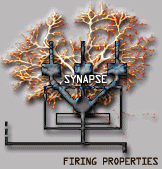 MODELS REVISITED.
MODELS REVISITED.  MODELS REVISITED.
MODELS REVISITED.
A- and P- consciousness (A for Access and P for Phenomenal) are two Ned Block's different aspects of the unified consciousness, the first comparatively easy to explain mechanistically (in the next future) and the second really harder (in the far future).
These arguments help to think over our own mental self-organization model referring to cognitive-based neural subnets, with a Hebb and Hopfield flavor, and a biothermodynamic background. Chalmers refers to experience and awareness: we prefer to emphasize sensitivity to dangerous and alarming conditions. We think that the last mentioned conditions are the independent variable from which awareness and consciousness evolved in an ancillary way. The brain possibility to become alarmed, is an independent variable from which depend, with overtones, awareness, P-conscious experience and consciousness itself. Classical non-alarm physics, non-semiotics physics, ignores physical-psychological natural alarms and consciousness; new physics explores if it is possible to add them up, with a possible new chapter that should involve (or not) a new universal constant.
Daniel Dennett in his Consciousness Explained and some previous works insists repeatedly that the ethology related to brains in evolution shows progressive alarm systems that keep the brained animals outside dangers, predators and risks and attracted by helpful opportunities.
These alarms are the basis for higher neo-cortex neural systems, bringing an analogy with configurations and resources related to out-of-service alarms. Remember the already mentioned biological rule related to nervous systems: an obsolete behavioral neural subnet is in general the species-evolutive base for a more adapted behavioral net, apt for new ecological niches.
NEXT
OTHER
2.feb.1999
Pulsar tecla de vuelta
Glosario de Carlos von der Becke.